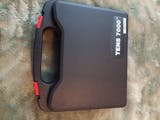- No products in the cart.
I injured my lower back and have been in chiropractic treatment. My chiropractor recommended the TENS 7000 to loosen the muscles around the affected area in my lower back in conjunction with my chiropractic treatment. The TENS 7000 has been especially effective in reducing pain and increasing my flexibility. With proper medical care and advice, I would highly recommend the TENS 7000 to anyone suffering from muscle pain. Fantastic product!
I am grateful for this up grade to the larger area of a pad. It has made my recovery so much better.
I recommend this design.
Respectfully,
Madam Ambassador Dr. Nealy
H.E. United Nations Peace Ambassador NGO ECOSOC
Dr. Angela J. Nealy
I bought it for my wife and she now feels better now and her pain is easing down. Its simple and easy to use with very clear instructions included.
Thank you!
I borrowed this model from a relative to try on lower and upper back, thigh, knee, ankle. After some immediate relief I ordered one, along with extra pads for future use. The tens-7000 I recieved is a second generation. I started using it immediately with good results. The power, the choice of settings, the ease of use and the pads, all are well made. So far I've only been able to comfortably use the unit up to half of its top power, so it doesn't seem to be lacking the ability to provide all the stimulation needed. It's powered by one 9v battery which has lasted through about 20 hrs of timed use, so far. Time will tell, but so far its great.
Cannot get this machine to work.











